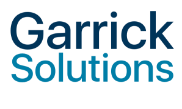Maximizing Profits: 6 Ways to Optimize Your Pricing Strategy
- michael
- May 2, 2023
Profit maximisation is surely one of your top concerns as a business owner. However, with
increased competition and changing customer behaviour, optimising your pricing plan to
attain the appropriate level of profitability can be difficult. However, by using the correct
pricing plan, you may increase income while decreasing costs. Here are five tips for
optimising your pricing strategy and increasing earnings.
1. Conduct a Detailed Cost Analysis
Understanding your expenses is one of the most important considerations in determining
the appropriate pricing for your products or services. It’s critical to understand all of the
costs associated with manufacturing or distributing your services, including direct costs
such as labour, materials, and overhead charges. A detailed cost analysis can assist you in
determining the lowest price you can charge while still earning a profit.
After you’ve determined your minimal pricing, think about your competitors and the value
you provide to your clients. You may be able to charge a greater price if your items or
services are unique or provide a superior consumer experience. If your offers are equivalent
to those of your rivals, you may need to modify your rates in order to remain competitive.
2. Apply Dynamic Pricing
Dynamic pricing is a pricing approach in which prices are adjusted in real time based on
market demand and other factors. Because it allows you to optimise pricing depending on
current market conditions, this strategy may be quite successful in maximising earnings.
Airlines, for example, employ dynamic pricing to modify ticket costs based on variables
such as the day of the week, time of day, and even the number of available seats. Dynamic
pricing is also used by retailers to modify prices based on demand, competition, and
inventory levels. You may optimise your prices to maximise revenue and profitability by
introducing dynamic pricing.
3. Combine Products or Services
Bundling is another efficient pricing approach that involves selling many items or services
at a reduced price. Customers are more inclined to purchase numerous things at once when
they perceive a discount, therefore bundling may be an efficient approach to enhance sales
volume and profitability.
A software corporation, for example, may provide a suite of goods at a lower price than if
clients purchased each product alone. Alternatively, a restaurant may provide a prix fixe
menu that includes an appetiser, entrée, and dessert at a lower price than purchasing each
item separately. You may improve consumer value and income by combining items or
services
4. Make Use of Psychological Pricing
A pricing technique that uses human psychology to influence purchase decisions is known
as psychological pricing. Rather than just establishing pricing based on cost, this strategy
entails setting prices that appeal to buyers’ emotions and perceptions.
Setting prices slightly below a round number is a frequent psychological pricing strategy.
Setting a price of $9.99 rather than $10.00, for example, might make the product look more
appealing to buyers. Anchoring is another strategy that includes charging a high price for
a product or service in order to make a lower price look more appealing in contrast.
You may affect clients’ perceptions of value and enhance the chance of purchase by
utilising psychological pricing methods, thus increasing your profitability.
5. Strategically Distribute Discounts
Finally, giving discounts may be a powerful method to boost sales volume and client
loyalty. However, to avoid degrading your profitability, it is critical to give discounts
judiciously.
Offering discounts on slower-moving items or during sluggish sales seasons is one
effective strategy. During quiet periods, this might help you move goods and create
income. Another strategy is to provide discounts to new customers or as part of a loyalty
programme in order to stimulate repeat purchases and client retention.
It is critical to thoroughly analyse the impact of discounts on your bottom line and ensure
that any reductions given maintain an acceptable profit margin.
6. Optimize Pricing Plan
Finally, optimising your pricing plan is an important part of maximising earnings in any
firm. You may discover the proper pricing balance for your organisation by doing a
thorough cost study, using dynamic pricing, combining items or services, employing
psychological pricing methods, and selectively giving discounts.
It’s critical to remember that pricing is a continuous process that needs regular study and
modification. Reviewing your pricing plan on a regular basis and making changes
depending on market conditions, customer input, and other variables may help you stay
competitive and maximise your earnings over time.
Furthermore, it is critical to properly express your price plan to your clients. Customers
value openness, and knowing how you arrived at your rates may help to develop confidence
and loyalty. Make careful to explain the value you provide and why your pricing are set as
they are.
Conclusion
Finally, optimising your pricing plan is an important part of maximising earnings in any
firm. You may discover the proper price balance for your organisation by analysing
expenses, introducing dynamic pricing, combining items or services, employing
psychological pricing methods, and strategically giving discounts. Remember that pricing
is a continuous process that requires regular examination and modification. You may
achieve financial success while providing value to your consumers with a well-executed
pricing plan.

Robotic Process Automation
Blog Categories
Feel free to get in touch with our experts.
Other articles
Emerging Chatbot Trends: AI Technology, NLP, Sentiment Analysis & Multi-Language Support for Customer Support
Enhancing healthcare through intelligent conversation. Enhancing Mental Health Support and...
Read MoreHow to Get Started with AI and RPA
Introduction to AI and RPA: A Beginner’s Guide Artificial Intelligence...
Read MoreAI and RPA for Customer Service
The Impact of AI and RPA on Customer Service: Enhancing...
Read More


